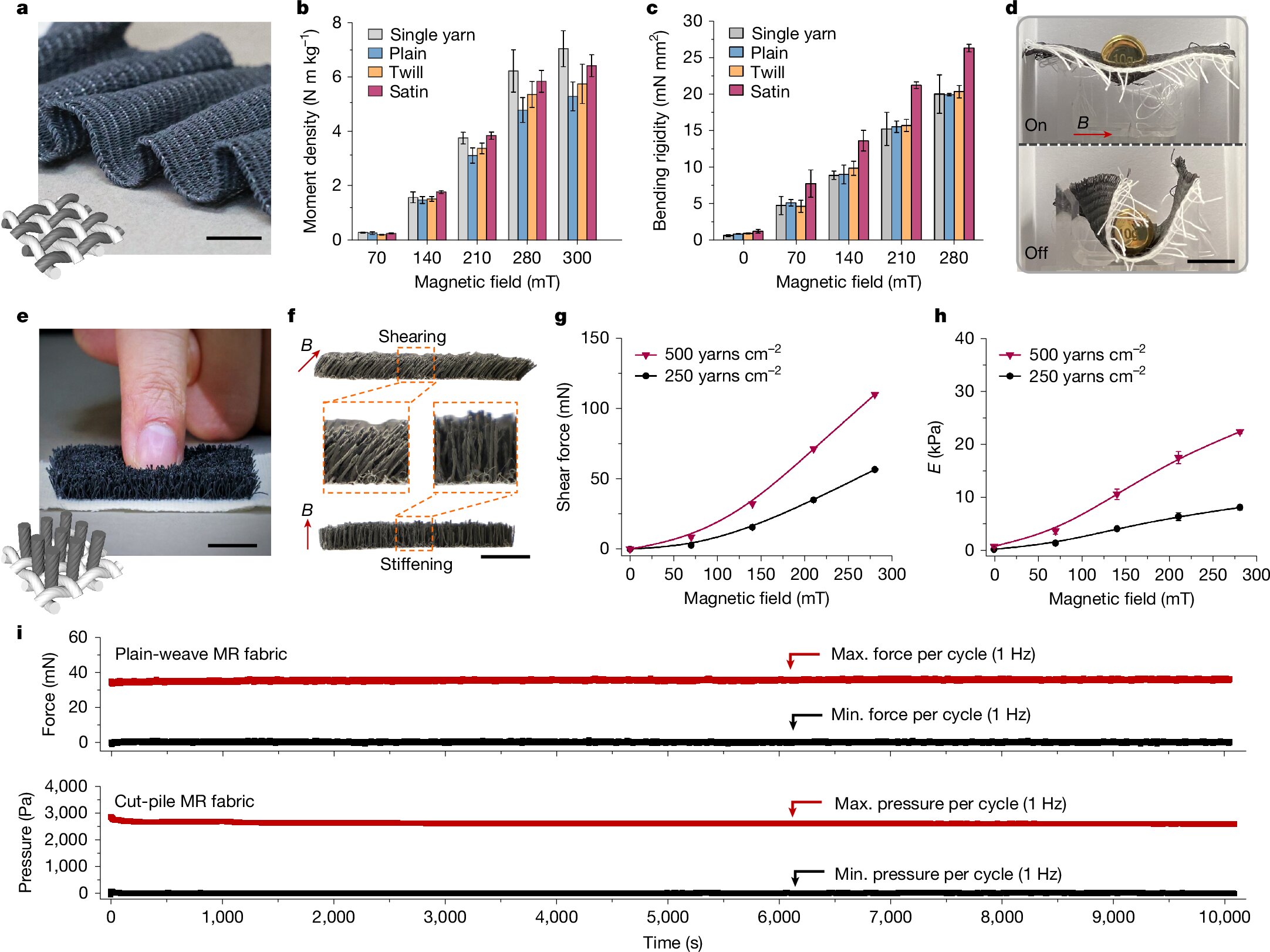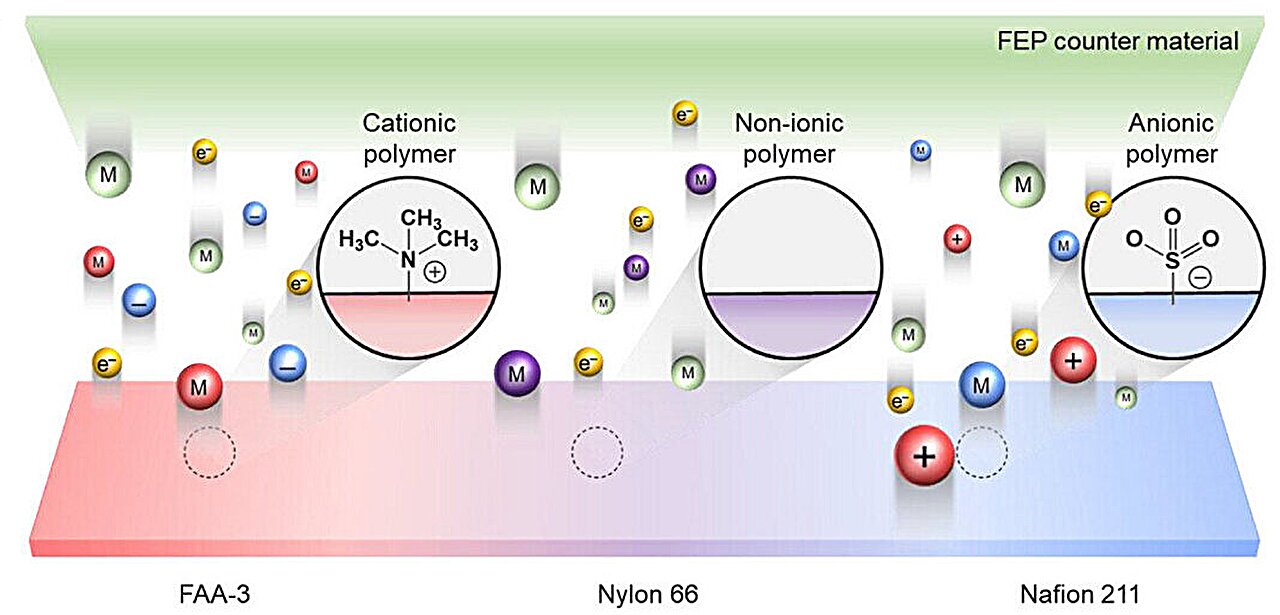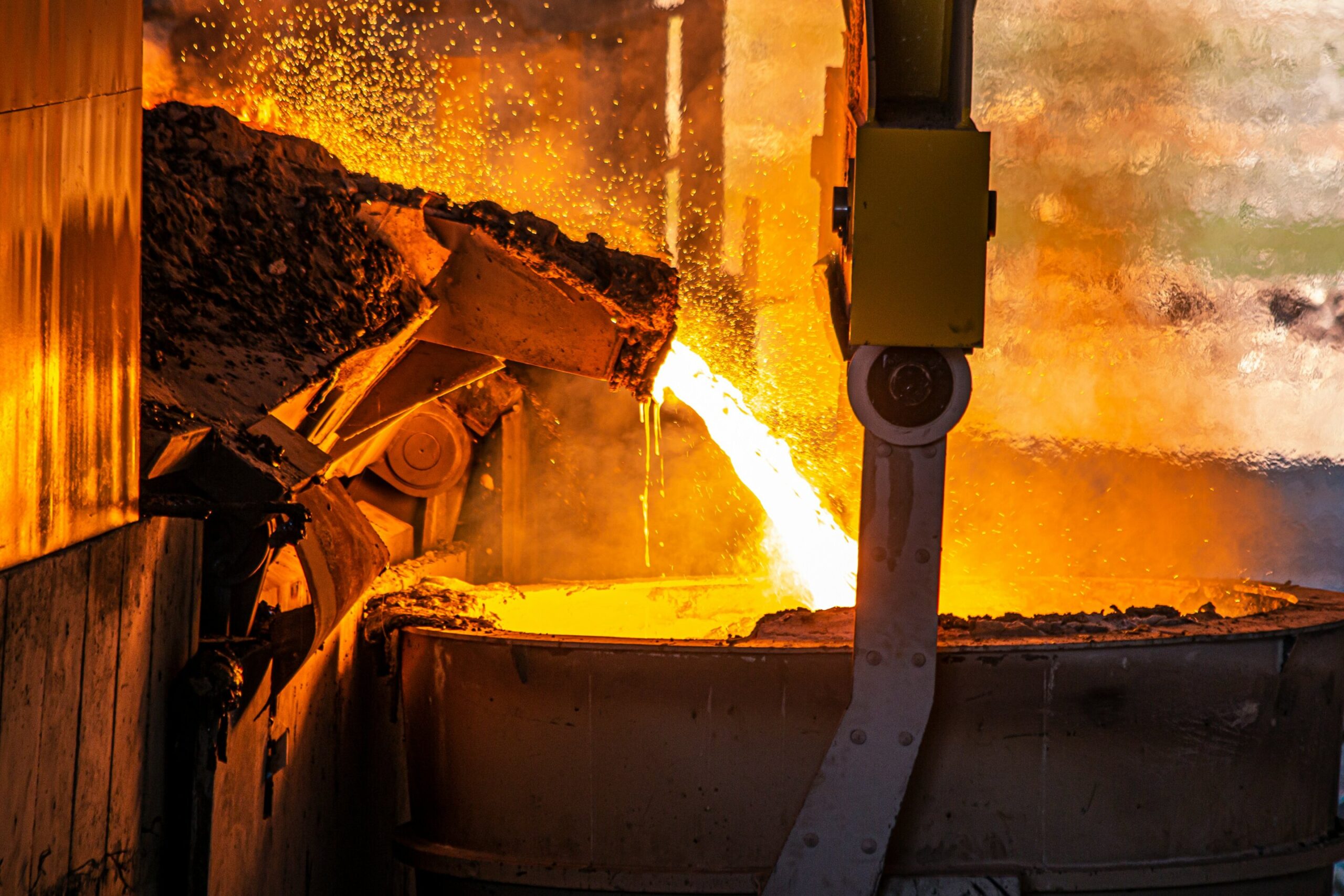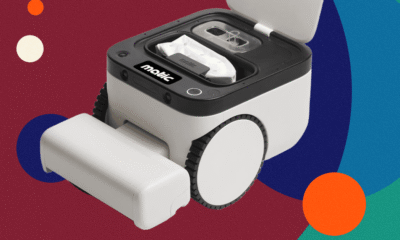Tech
Our Impatient Coffee Lover Found the Best Pod Coffee Maker

I was really annoyed when I realized that Nespresso sent me this brewer in black. Champagne problems, I know—but this brewer comes in so many delightful colors, from deep red and orange to pastel lavender and pink. It looks cute on your countertop with its little rounded figure and relatively short stature. The Nespresso Vertuo Pop+ can handle all Vertuo coffee pods. The pods are aluminum and can be recycled by ordering free recycling bags or taking them to a drop-off location. To brew, simply open the machine by twisting the lock on the lid, choose a capsule, and press the button. You can physically move the adjustable drip tray between two ladder-like rungs on the front of the machine. There’s also a companion app that gives you maintenance alerts, video walk-throughs, and easy pod reordering.
Closing and locking the machine, or pressing the coffee button while the machine is locked, will start a heating cycle that takes about 30 seconds. The machine automatically recognizes the capsule you insert, and it extracts brew size based on the capsule as well. For example, espresso capsules will brew 1.35 ounces, double espresso capsules brew 2.7 ounces, and coffee capsules brew 8 ounces. This is different from other machines where you select the capacity you want. In the app you can make minor tweaks, such as making espresso shots shorter or longer. You can press the coffee button to end brewing early (a very handy trick if you accidentally use a 6-ounce mug for an 8-ounce brew, which I may or may not have done.) The machine has a waste basket that’ll automatically collect spent capsules. I’m not a huge fan of Nespresso’s flavored coffee and espresso capsules, simply because I would rather make traditional coffee and then add any whimsical flavorings later to suit my tastes. But if you prefer your coffee with a side of caramel or gingerbread or almond or some other decadent altering, there are many flavored options for you.
With plain old coffee and espresso capsules, I found myself pleasantly surprised by the body and mouthfeel of the drinks. Technically, these espresso pods are not making espresso. But it’s a darn close espresso-like beverage, and you can get it without needing an entire separate machine with a tamping weight and a portafilter and a pressure gauge. And the coffee is on par or slightly better than other machines I’ve tried, with a nice acidic bite that isn’t too watered down. If convenience is what you seek, this do-it-all machine is worth a look.
I was sent the bundle that comes with an optional milk frother. I like having the option, but be aware that it will take up another wall outlet. But the Aeroccino was easy to use—pour in your milk of choice and press the button. It’ll heat and froth your milk automatically—it takes about a minute and it’s whisper-quiet. Every Nespresso capsule I’ve tried has featured a thick layer of crema, and having whipped, thick milk on top of it made my average cup of coffee a more elevated experience.
| Brew capacities | 1-12 ounces |
| Available colors | 14 |
| Dimensions | 8.6″D x 14″W x 10.4″H |
| Warranty | 1 year |
| Recycling information | Capsules are recyclable |
Tech
Novel smart fabrics give robots a delicate grip

Robots aren’t always the most delicate of machines when handling fragile objects. They don’t have the lightness of touch of humans. But that could be about to change thanks to a new development in smart materials.
Researchers have developed a method for weaving flexible fibers that can be controlled by magnetic fields. Not only can this be used for robot hands to pick up objects like soft fruits, potato chips and worms, but it can also be used in a range of other applications. These include gloves that provide a realistic touch in virtual reality and breathable fabrics.
Creating a new smart fiber
In a paper published in the journal Nature, researchers detail how they created their smart textile, which can bend, stiffen or change its surface texture on demand. First, the team mixed tiny, soft magnetic particles (carbonyl iron) into extremely thin, flexible fibers of a polymer, LDPE (low-density polyethylene).
To overcome the challenge of making a fiber that is both thin and packed with magnetic materials, the researchers used a process called melt spinning. This high-speed technique allowed them to create fibers just 57 micrometers in diameter.
The next stage involved twisting seven of the fibers together into a helical yarn. The importance of this shape is that it can respond to a magnetic field from any direction. This is what truly sets it apart from other smart materials.
Instead of being limited to simple “on/off” reactions (like heating or stiffening when a voltage is applied), which is called scalar control, the helical shape provides the material with directional control. That means it can respond to the strength and direction of the magnetic field, which allows more sophisticated movements.
“Our work provides insights into stimuli-responsive fibrous materials, elevating them from scalar to sophisticated vector control, heralding an era of smart textile innovation,” wrote the researchers in their paper.
Real-world applications
The team created two types of fabrics from the yarn. A woven textile that is best for bending and stretching, and a cut-pile fabric that looks and feels like a soft brush. From the woven textile, they made a kind of fabric patch that automatically opens and closes tiny ventilation slits in response to a magnetic field cycling on and off. This could be used to manage sweat and heat instantly.
With the cut-pile fabric, they built a soft robotic gripper. Because the thousands of magnetic fibers can individually stiffen and mold around objects, the gripper enables robots to safely and gently pick up delicate objects.
Additionally, the researchers made a virtual reality haptic glove. When you grab a virtual object, a remote magnetic field stiffens the fibers or presses them against your skin to simulate real-world tactile sensations.
Next up for the team is to improve the materials for commercial use, ensuring they are durable and safe for comfortable, everyday clothing.
Written for you by our author Paul Arnold, edited by Gaby Clark, and fact-checked and reviewed by Robert Egan—this article is the result of careful human work. We rely on readers like you to keep independent science journalism alive.
If this reporting matters to you,
please consider a donation (especially monthly).
You’ll get an ad-free account as a thank-you.
More information:
Junhong Pu et al, Vector-stimuli-responsive magnetorheological fibrous materials, Nature (2025). DOI: 10.1038/s41586-025-09706-4
© 2025 Science X Network
Citation:
Novel smart fabrics give robots a delicate grip (2025, November 13)
retrieved 13 November 2025
from https://techxplore.com/news/2025-11-smart-fabrics-robots-delicate.html
This document is subject to copyright. Apart from any fair dealing for the purpose of private study or research, no
part may be reproduced without the written permission. The content is provided for information purposes only.
Tech
Humidity unlocks hidden power of ions in generating static electricity

Professor Dong-Myeong Shin and his team from the Department of Mechanical Engineering under the Faculty of Engineering at the University of Hong Kong (HKU) shed light on the contribution of ions in electric charge transfer, though their contribution differs with environmental humidity.
This discovery adds new insights into contact electrification, the phenomenon where static electricity is generated when two different materials touch and then separate. This effect is important for many technologies, including photocopiers, spray painting, energy collection, and self-powered sensors.
Challenging old beliefs about charge transfer
In their study, titled “Quantifying Electron and Ion Transfers in Contact Electrification with Ionomers,” published in Advanced Functional Materials, the team presents evidence that both electrons and ions are transferred at the same time when two solid surfaces come into contact. This challenges the long-held belief that only electrons are responsible for generating static electricity.
The researchers tested three types of films—an anionic ionomer called Nafion 211, a cationic ionomer named FAA-3, and a non-ionic polymer called Nylon—by rubbing them against a fluorinated ethylene propylene (FEP) film.
They analyzed how charges decayed under heat and used advanced techniques to detect surface ions. This allowed them to measure how much electrons and ions contributed to the charge transfer.
Humidity’s surprising role in ion transfer
It was discovered that different ionomer materials displayed distinct charge-transfer behaviors, with humidity greatly amplifying the role of ions. At a relative humidity level of above 50%, ion transfer not only enhanced surface charge density but also offset the depletion usually caused by moisture.
Remarkably, even though less than 2% of the ions actually moved across the interface, their impact was surprisingly large—they played a key role in stabilizing and strengthening static charges. To understand how this happens, the team used computer simulations, which revealed that water molecules absorbed into the ionomer formed tiny channels inside the material. These channels allowed ions to move more freely toward the surface, especially in humid conditions.
Implications for technology and materials
“This is the first time we could unambiguously separate and measure the contributions of electrons and ions in solid contact electrification,” said Dr. Xiaoting Ma, co-first author of the paper.
“By using Nafion and FAA films as model systems, we gained unique insights into how positive and negative ions behave differently depending on humidity.”
Professor Shin highlighted the broader impact: “By quantifying how much electrons and ions transfer during contact, we can develop new strategies to create materials that work reliably even in humid environments. This not only advances fundamental scientific understanding but also opens up new possibilities for eco-friendly technologies such as printing, coating, environmental monitoring, and energy harvesting.”
The team also found that introducing ions onto a non-ionic polymer surface significantly improved its resistance to humidity, offering a practical strategy for engineering robust triboelectric materials.
After integrating Nafion and FAA films into triboelectric nanogenerators (TENGs), the devices showed stable output even in humid environments, successfully powering an array of 78 LEDs and maintaining performance over thousands of cycles.
More information:
Xiaoting Ma et al, Quantifying Electron and Ion Transfers in Contact Electrification with Ionomers, Advanced Functional Materials (2025). DOI: 10.1002/adfm.202506471
Citation:
Humidity unlocks hidden power of ions in generating static electricity (2025, November 13)
retrieved 13 November 2025
from https://techxplore.com/news/2025-11-humidity-hidden-power-ions-generating.html
This document is subject to copyright. Apart from any fair dealing for the purpose of private study or research, no
part may be reproduced without the written permission. The content is provided for information purposes only.
Tech
From sewer to furnace: How wastewater sludge is greening steel production

By turning wastewater sludge into biocoal and green hydrogen, EU researchers are helping reduce the steel industry’s environmental impact.
What comes out of our wastewater treatment plants may not be very appealing, but the real problem is what is left behind after water treatment. Wastewater plants produce a liquid sludge that is usually dried and then burned or dumped. This is costly, polluting, and has long been considered wasteful.
A group of researchers see it differently. This sludge, they argue, could become an unlikely ally in the fight against climate change—a feedstock for producing the hydrogen and carbon needed to make greener steel.
“This sludge has value, it is not just waste,” said David Chiaramonti, professor of energy systems, energy economics and bioeconomy at the Polytechnic University of Turin in Italy. “With it we can create things like carbon and hydrogen.”
Towards green steel
Chiaramonti is leading an EU research initiative called H2STEEL that brings together academics and steel industry experts from France, Italy, the Netherlands, Spain and the UK. Their goal is to design a process to extract the useful materials from wastewater sludge so that they can be reused and help reduce the steel industry’s emissions.
Steel production is essential for everything from airplanes and cars to buildings and wind turbines. It is also a major driver of climate change.
According to a 2023 report by the International Energy Agency, the steel sector alone accounts for 8% of global CO2 emissions. By comparison, the aviation industry emits about 2.5% of global CO2 emissions.
Cutting these emissions is particularly difficult. Steelmaking is complex and typically requires carbon-rich ingredients, which inevitably release greenhouse gases. That makes it one of the hardest industries to decarbonize—and one of the most expensive to transform.
Traditional steel production methods face increasing carbon pricing pressures across Europe under the EU’s Emissions Trading System. According to market forecasts, carbon prices could reach €120–150 per metric ton of CO2 by 2030, potentially adding significant costs per ton of steel produced.
For a global steel market worth more than €2.5 trillion annually, finding affordable low-carbon alternatives is urgent.
Hot sludge
This is where H2STEEL comes in. “It’s a good example of the circular economy,” said Chiaramonti. “We take a little-used resource, wastewater sludge, and make it useful again.”
The process works in two main steps. First, sludge is heated without oxygen to create biocoal, in a process called “carbonization.” Then methane from biogas plants is processed using this biocoal as a catalyst to produce hydrogen.
During this process, the biocoal becomes even richer in carbon, making it valuable for steelmaking. Another by-product, phosphorus, is separated for use in fertilizers.
Both outputs—hydrogen and carbon-rich biocoal—could help make steel cleaner. Traditional steelmaking burns coal with iron ore, releasing CO2. With H2STEEL’s approach, hydrogen can replace some of that coal. Meanwhile, the biocoal substitutes regular coal, turning waste into a useful industrial input.
The team is now building a 4-meter-tall processing machine in Turin to demonstrate the technology. “We break the biomethane into carbon and hydrogen by using the carbonized sludge at 900°C,” explained Chiaramonti. “That’s how we turn it into biocoal and circular hydrogen.”
Carbon and hydrogen
Official results are not available yet for the project, which will finish in March 2026, but the potential is significant.
Decarbonizing steel is attracting intense research efforts, from electrical furnaces to hydrogen-based processes. H2STEEL’s sludge-based approach could slot into this wider transformation.
“This technology is very flexible,” said Jan Wiencke, team leader for sustainable carbon at steelmaker ArcelorMittal’s research center in Maizières, northern France.
Headquartered in Luxembourg, ArcelorMittal is the second-largest steel producer in the world.
The company is also a partner in the H2STEEL project and hopes to be able to use the technology being developed at their steel plants.
“Whether we use a hydrogen furnace or an electrical one, we will still need ingredients like carbon and hydrogen in our processes,” said Wiencke.
“With this technology we can already reduce emissions now, and it will continue to be useful in the future.”
Other partners include Leiden University in the Netherlands and Imperial College London.
Next steps
One of H2STEEL’s biggest advantages is speed. If trials succeed, the technology could be rolled out within a few years—unusually fast in an industry where infrastructure changes often take decades.
Still, challenges remain. “We need to secure the sludge, transform it, and deliver it to the steel plants,” said Chiaramonti. Setting up supply chains and minimizing costs will be crucial.
ArcelorMittal, which aims to be carbon neutral by 2050, is watching closely. “This is a great technology for the steel industry, but it must prove itself economically,” said Wiencke.
A patent is already pending, and the partners are eager to see results from the demonstrator. “What we’re doing looks very promising,” said Chiaramonti. “Now it’s a question of taking the last steps.”
If successful, H2STEEL could deliver more than a technical breakthrough. By turning waste into valuable raw materials, it embodies the principles of the circular economy, helping Europe stay competitive while moving closer to its net-zero goals.
Citation:
From sewer to furnace: How wastewater sludge is greening steel production (2025, November 13)
retrieved 13 November 2025
from https://techxplore.com/news/2025-11-sewer-furnace-wastewater-sludge-greening.html
This document is subject to copyright. Apart from any fair dealing for the purpose of private study or research, no
part may be reproduced without the written permission. The content is provided for information purposes only.
-

 Business1 week ago
Business1 week agoGST rationalisation impact: Higher RBI dividend expected to offset revenue shortfall; CareEdge flags tax pressure – The Times of India
-

 Tech1 week ago
Tech1 week agoBlood Tests for Alzheimer’s Are Here
-

 Sports1 week ago
Sports1 week agoPeat wows in debut as Arizona beats No. 3 Florida
-

 Business1 week ago
Business1 week agoSetback for expatriates? Delhi HC upholds mandatory EPFO membership; what this means for foreign staff – The Times of India
-

 Fashion1 week ago
Fashion1 week agoBangladesh Bank allows foreign currency-taka swap facility for dealers
-

 Politics1 week ago
Politics1 week agoTrump links Republicans’ election setbacks to record US govt shutdown
-

 Tech1 week ago
Tech1 week agoThe AI Data Center Boom Is Warping the US Economy
-

 Tech1 week ago
Tech1 week agoZohran Mamdani Just Inherited the NYPD Surveillance State


















